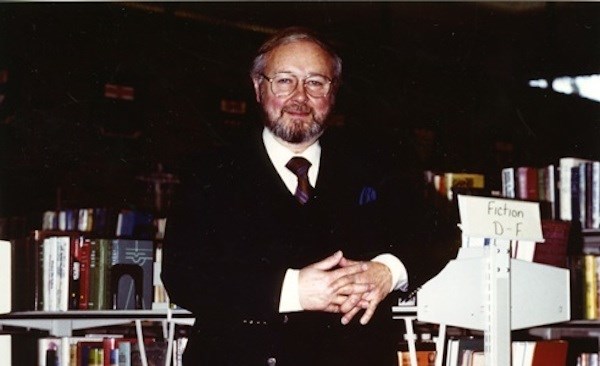A lot of people have big dreams of writing a book that will be read and loved by others. For one of our past residents this dream became a reality with the publishing of A Good Place to Come From. Morley Torgov was born in Sault Ste. Marie on Dec. 27, 1927 and grew up as part of the Sault’s small Jewish community during the 1930s and 1940s. As most authors will admit, they are strongly influenced by the people that they encounter during their childhood and Morley was no exception. He described himself as having a lack of athletic ability as a child which led to his pursuit of music and literature instead.
He developed a love of music and took music lessons from Mr. Blackburn, who Morley later based the book character Derek Blackthorn on in The Outside Chance of Maximillian Glick. Mr. Blackburn encouraged Morley to pursue his interest in music and literature. Keith Mather was his English teacher at Sault Collegiate and helped to develop his writing style. As a teenager, he spent the summers of 1943, 1944 and 1945 working as a cub reporter for the Sault Star reporting on City Hall with Tom Tipton. The city editor at this time was Emil Rajnovich who also influenced Morley. He described Emil as “gruff and tough” but he appreciated the high standard of reporting and writing that he was expected to meet. After high school, he finally decided to pursue a career in law. As a law student, he worked for Anthony Vannini. Morley claimed that it was Vannini’s precise way of speaking, writing and thinking that helped to sharpen his own thoughts.
Morley’s father was an immigrant who had fled from the Russian army in 1917. After settling in Sault Ste. Marie his father opened the A. Torgov Dry Goods store on Queen Street, supplying work clothes for the steel workers but Morley described his father as very cosmopolitan in this thinking and he wanted something better for his son so he encouraged him to follow his dreams, even if it meant leaving the community. Like many young people Morley was conflicted about what he was going to do with his life. He was torn between his music, writing or a career in law. Feeling confined in a small town he wanted go to the “big city” so he relocated to Toronto in 1947. He graduated from the University of Toronto in 1950 and then went on to Osgoode Hall and was called to the bar in 1954. He eventually became a partner in the law firm, Olsch, Torgov, Cohen, and he specialized in commercial law. He met his wife, Anna Pearl in October 1948 on a blind date and they eventually married making their home in central Toronto. Their daughter Sarah Jane pursued an acting career while their son Alexander was a history buff.
Morley explained that he appreciated other Canadian authors but he did not like the “pioneer, pastoral” style that so many authors used. He feels his writing style is probably closer to Mordecai Richler, who writes in a much “grittier” style, although his content is not as “dark”. Morley Torgov portrays his characters as real people, with all of their good and bad characteristics, often using humour to convey a natural everyday feeling to his stories. Like most authors he is very critical of his own work and is rarely satisfied with the final product.
By the 1960s he had begun writing short stories for magazines in his spare time and it was through this endeavour that he was encouraged to expand his stories into a book. He described this process as “years of agony”. After being turned down by several publishers, his manuscript was finally accepted and A Good Place to Come From was published, winning his first Stephen Leacock Award for Humour in 1974. He continued to write other books including The Abramsky Variations, The Outside Chance of Maximillian Glick, St. Farb’s Day and The War to End All Wars, with some being turned into movies and television shows. He has been able to balance his writing with his law career even until well into his 80’s. In 2015, he received the Order of Canada as an acknowledgement of his contributions to Canadian society.
Who would have guessed that when Morley Torgov was growing up in Sault Ste. Marie during the 1930s and 1940s that he would be able to take his everyday life and experiences and create award-winning stories to share with the world?
